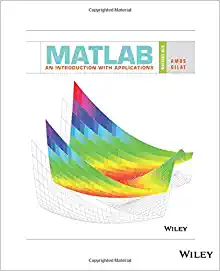Question
Q1) Currently a stock trades at $48 a share. You can buy a 6 month European call option for $5 and a 6 month Put
Q1) Currently a stock trades at $48 a share. You can buy a 6 month European call option for $5 and a 6 month Put option for $8, both with a strike rate of $50. The annual risk free rate is 2%. Using discrete compounding:
- a)Identify any mispricing between the price of the actual call option and one that you can construct synthetically.
- b)If you find that an arbitrage opportunity exists how would you execute it to capture the riskless profit?
- c)Given the current pricing of the options, how large would the dividend 5 months from now need to be, to make these pricing levels consistent with no arbitrage? Ignore any mispricing of the current options that would be needed with the introduction of a dividend.
Q2)
- a)Compute the fixed rate on a 10 year, $100M amortizing swap. $20M of principal is paid down at the end of years 2, 4, 6, 8 and 10. Assume annual payments and discrete compounding.
- b)If rates go up immediately by 50 basis points after the Swap is put in place compute its change in market value. Assume you are receiving Float and paying Fixed.
- c)If LIBOR rates for years 1-5 are equal to the initially projected forward rates and LIBOR for years 6-10 are 50, 20, 30, 25 and 10 basis points, above the initially projected forward rates what are your net cash flow payments/receipts in years 6 and 10?
Q3)
The spot currency exchange rate between the US and the UK is USD/GBP = 1.30. One year forward rates for the next three years are:
Year 1 Year 2 USD 2.00% 5.00% GBP 2.50% 3.50%
Year 3 4.00% 3.20%
2 year forwards in the currency market are being offered at 1.32 and 3 year forwards at 1.31. Use annual continuous time discounting. Also assume that any arbitrage gains can be converted to the investor's currency at the contracted forward rate.
- a)Is there an arbitrage opportunity for a US investor (Investor A) who is willing to invest $100M to take advantage of any mispricing at the 3 year point? Show the trade and resulting cash flows.
- b)Compute the profit opportunity for another US investor (Investor B) who is also investing $100M but is looking to profit from any mispricing in year 2?
Q4)
An equity investor with a $200M portfolio has allocated 50% of their portfolio to the S&P 500 which has a beta of 1.0 and allocated the balance to Asian equities which has a beta of 1.5 as measured (regressed) against the S&P 500.
The only hedging instrument available are futures on the S&P 500 index. The current level of the S&P 500 Index is 2,000 and the rate free rate is 5%. Over the next year the investor wants to target a 30%/70% S&P / Asian mix and achieve a 2.0 beta for the S&P 500 Index and 4.0 for Asian equities. Use discrete compounding.
- a)Compute the futures trades needed to achieve this?
- b)Assume that in 1 year the return on the S&P is 15% and the return on Asian equities is
20%. Show the returns for each asset class and for the portfolio in total. Are these in line
with what you expected? If not show the attribution as to why it is different.
- c)In practice which equity hedge do you think will have a better match? Briefly outline
some of the complications or potential hedging inefficiencies.
Step by Step Solution
There are 3 Steps involved in it
Step: 1

Get Instant Access to Expert-Tailored Solutions
See step-by-step solutions with expert insights and AI powered tools for academic success
Step: 2

Step: 3

Ace Your Homework with AI
Get the answers you need in no time with our AI-driven, step-by-step assistance
Get Started


